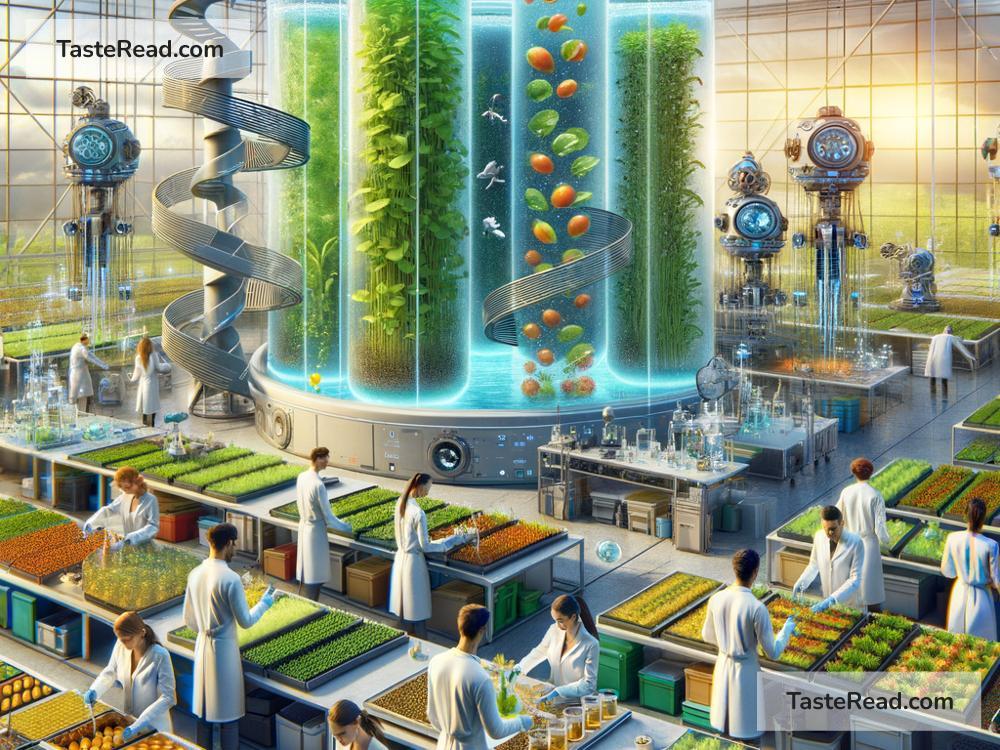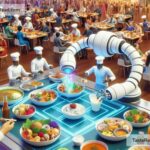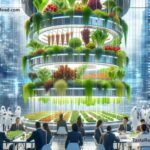The Future of Food: How Working Together Can Solve Big Challenges
Food has always been an essential part of life. From the early days of hunting and gathering to today’s supermarket shelves filled with options, the way we grow, process, and eat food has transformed over thousands of years. But as our world changes faster than ever, food systems face major challenges like climate change, population growth, and resource shortages. So, how can we make sure there’s enough food for everyone? The answer lies in working together across different fields of study, or what’s called cross-disciplinary collaboration. When scientists, farmers, engineers, health experts, and entrepreneurs team up, incredible innovations can happen. Let’s explore how this is shaping the future of food!
Why Do We Need Change in Food Systems?
The food industry is at a crossroads. Here are some key challenges that need urgent attention:
-
Feeding a Growing Population: By 2050, the global population is expected to reach nearly 10 billion. We’ll need to produce about 60% more food than we do now to meet demand.
-
Climate Change: Rising temperatures, unpredictable weather, and reduced water supplies make traditional farming harder. Fields may yield less crops, and droughts and floods hurt livestock too.
-
Resource Scarcity: The world is running low on vital resources like fertile soil, fresh water, and fossil fuels that are used in food production. Our current methods are not sustainable.
-
Food Waste and Malnutrition: Nearly one-third of all food produced globally is wasted, even though millions of people still go hungry every day. At the same time, many other people lack access to fresh fruits and vegetables, leading to poor nutrition.
Clearly, the way we grow, transport, and consume food needs bold solutions. And that’s where cross-disciplinary collaboration can help.
What Is Cross-Disciplinary Collaboration?
Cross-disciplinary collaboration means experts from different fields combining their knowledge to solve a problem. For example, imagine:
- A farmer teams up with a plant scientist to test drought-resistant crops.
- An engineer and computer programmer design smart irrigation systems to save water.
- A nutritionist and sociologist work together to improve healthy eating programs.
When people from different backgrounds bring their unique skills to the table, they can achieve far more than if each group worked alone.
Innovative Ideas Shaping the Future of Food
Let’s look at some exciting examples of how cross-disciplinary teamwork is transforming food systems:
- Alternative Proteins:
Raising livestock for meat takes a lot of land, water, and energy. To meet future protein needs, food scientists are developing new sources such as: - Plant-based meat (like Beyond Meat and Impossible Foods).
- Lab-grown meat, made by cultivating animal cells outside the body.
- Edible insects, which are rich in protein and environmentally friendly.
These innovations wouldn’t be possible without biologists, chemists, food technologists, and environmentalists working together.
-
Vertical Farming:
Instead of growing crops in large horizontal fields, engineers and agricultural scientists are creating vertical farms—multi-story greenhouses that grow food indoors using technology like LED lights and hydroponic systems (growing plants in water instead of soil). Vertical farming solves issues like lack of space and improves efficiency by using less water and chemicals. -
AI and Data in Agriculture:
Artificial intelligence (AI) and big data are revolutionizing farming. Drones and sensors can monitor soil health, weather, or pest levels in real-time. Sophisticated algorithms help farmers plan when to plant seeds, water crops, or apply fertilizer. This type of “smart farming” reduces waste and improves productivity, thanks to collaboration among software developers, engineers, and farmers. -
Personalized Nutrition:
Health experts and genetic researchers are exploring personalized diets based on individual needs, such as genetics or lifestyle. For example, wearable devices can track vitamin levels and suggest tailored meal plans to prevent chronic diseases. This approach links biology, nutrition, and technology in exciting ways. -
Reducing Food Waste:
Entrepreneurs and environmental scientists are creating solutions to minimize food waste. Apps like Too Good To Go connect restaurants with consumers to sell leftover food at lower prices. Meanwhile, food chemists are developing packaging that keeps food fresh longer.
Why Collaboration Matters for the Future of Food
Food is more than just something we eat—it connects people, cultures, and the planet. But the challenges we face today are too big for any one group to solve alone. Cross-disciplinary collaboration brings fresh ideas to the table by combining different areas of expertise. Farmers, scientists, engineers, policymakers, and consumers all have a role to play in shaping the future of food.
Working together also ensures solutions are more sustainable. Engineers can design food systems that use less energy, while environmental experts ensure those systems protect our planet. By involving health professionals, we can prioritize diets that nourish people rather than harm them. Collaboration isn’t just a good idea—it’s the key to success.
Imagine the Future
Picture a world where every person has access to safe, nutritious, and affordable food. Farms could be located in cities, growing food vertically without damaging the environment. Meat might come from labs instead of animals, reducing the need for large-scale factory farms. Technology could help farmers make smarter decisions, and waste-free systems would ensure a greener planet.
This future isn’t a far-off dream—it’s already being built. But to make it a reality, we need to think bigger and work together. The challenges ahead may feel overwhelming, but with cross-disciplinary collaboration, they become opportunities to create something better.
The future of food depends on teamwork, creativity, and science. Together, we can create a world where food nourishes people and preserves the planet for generations to come.


